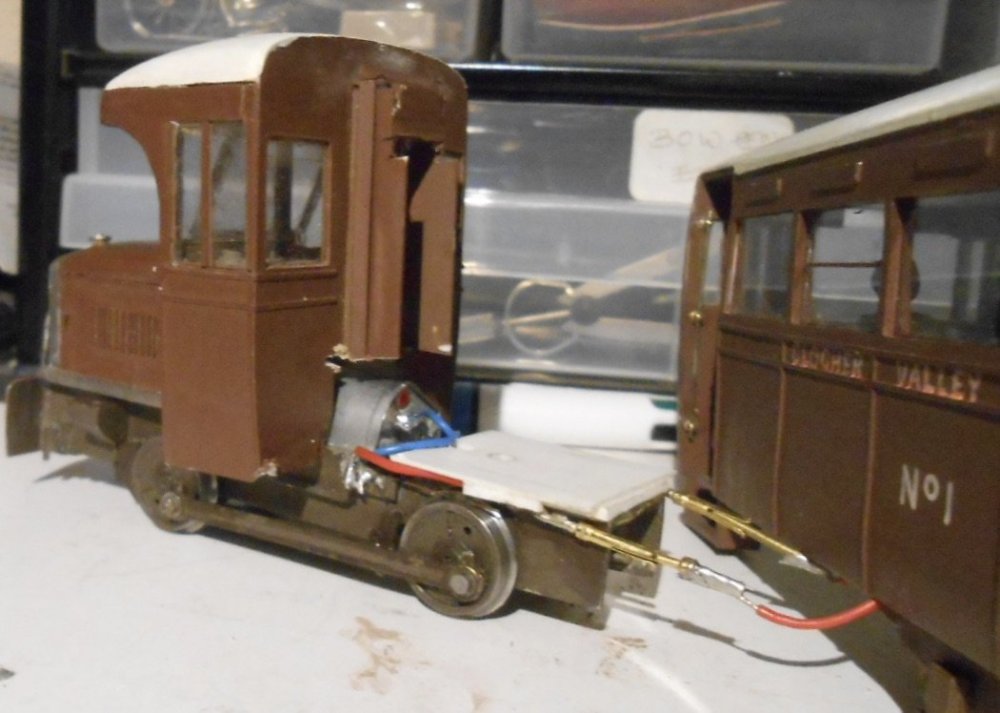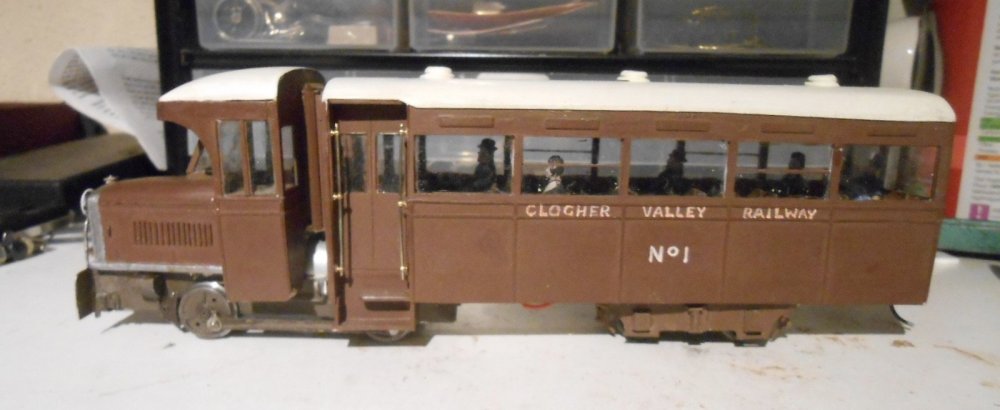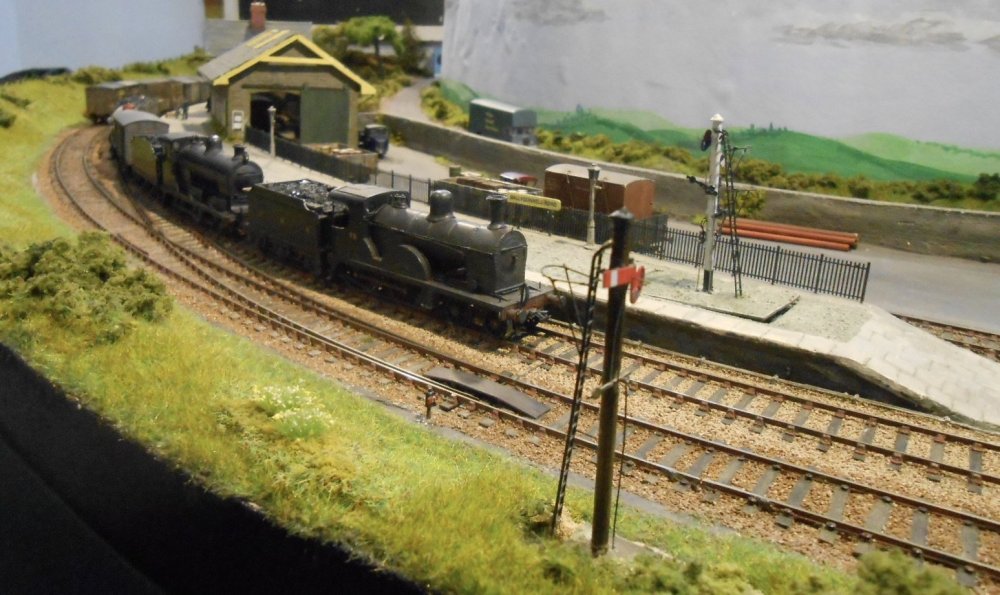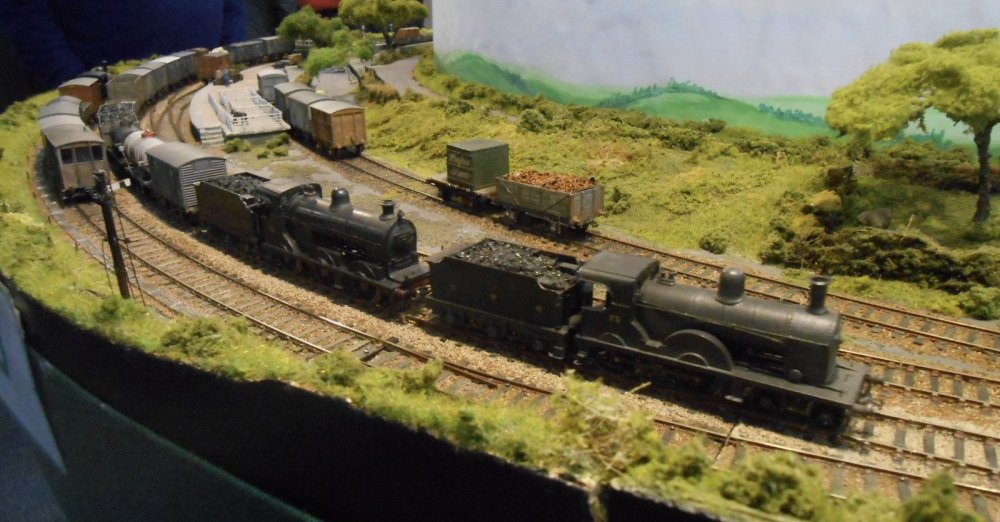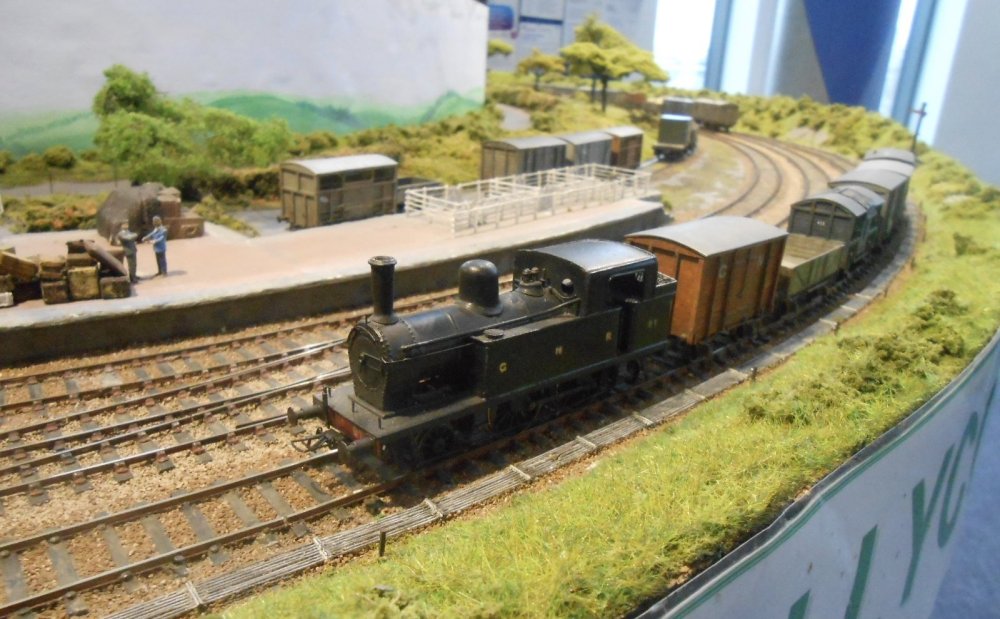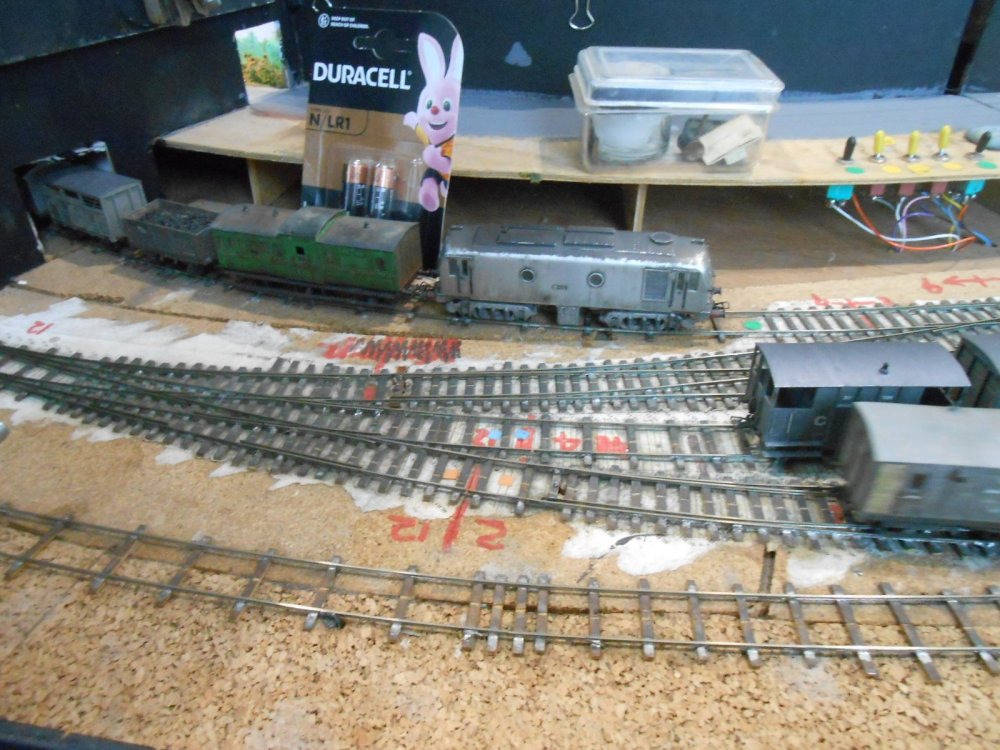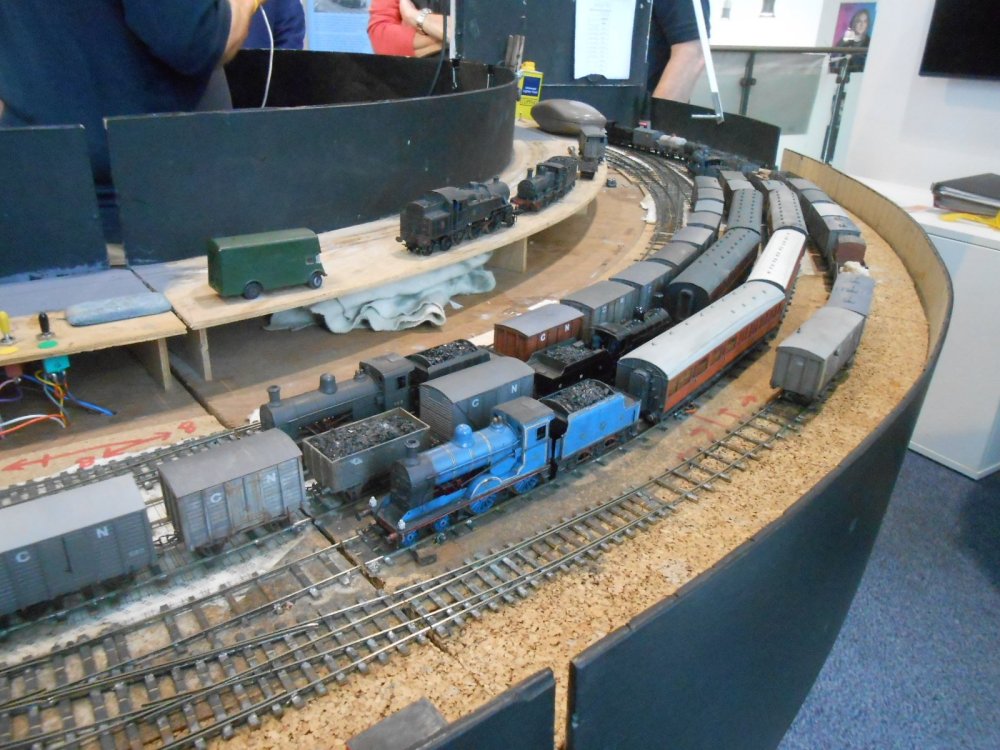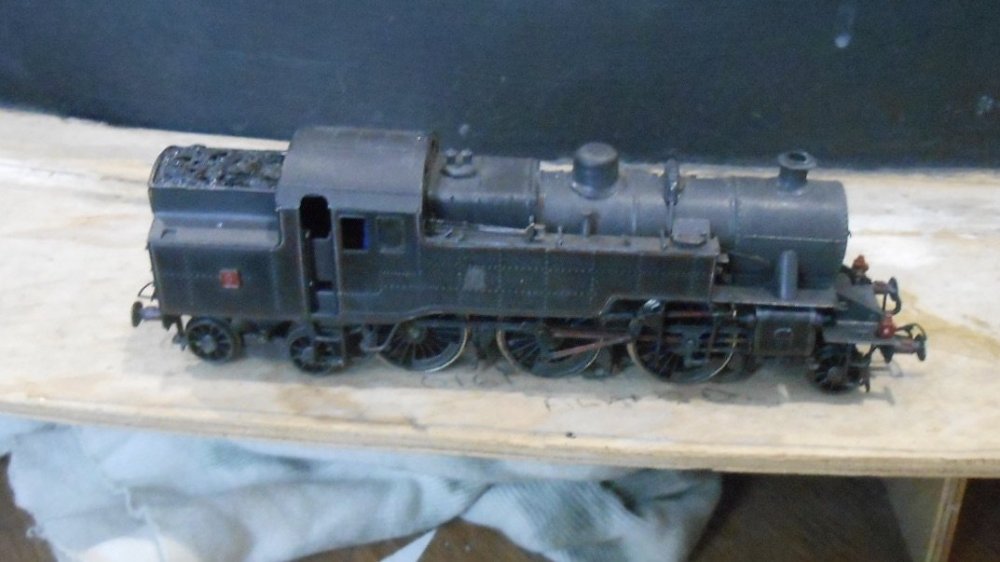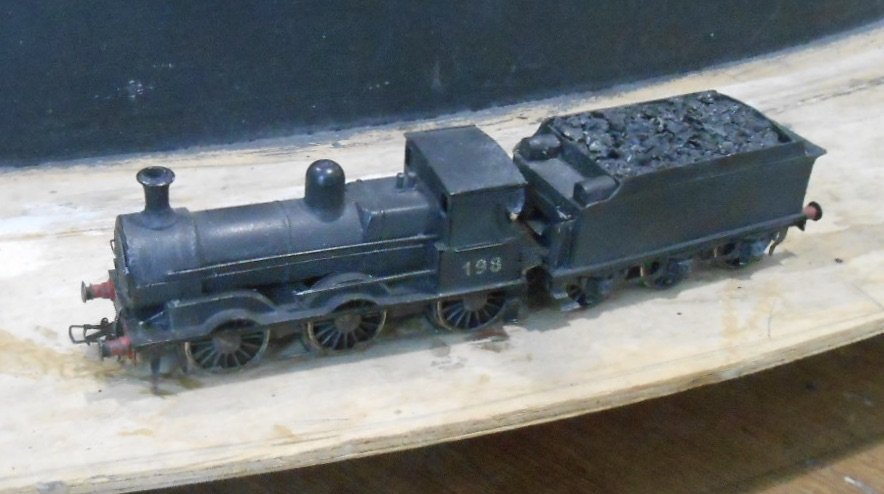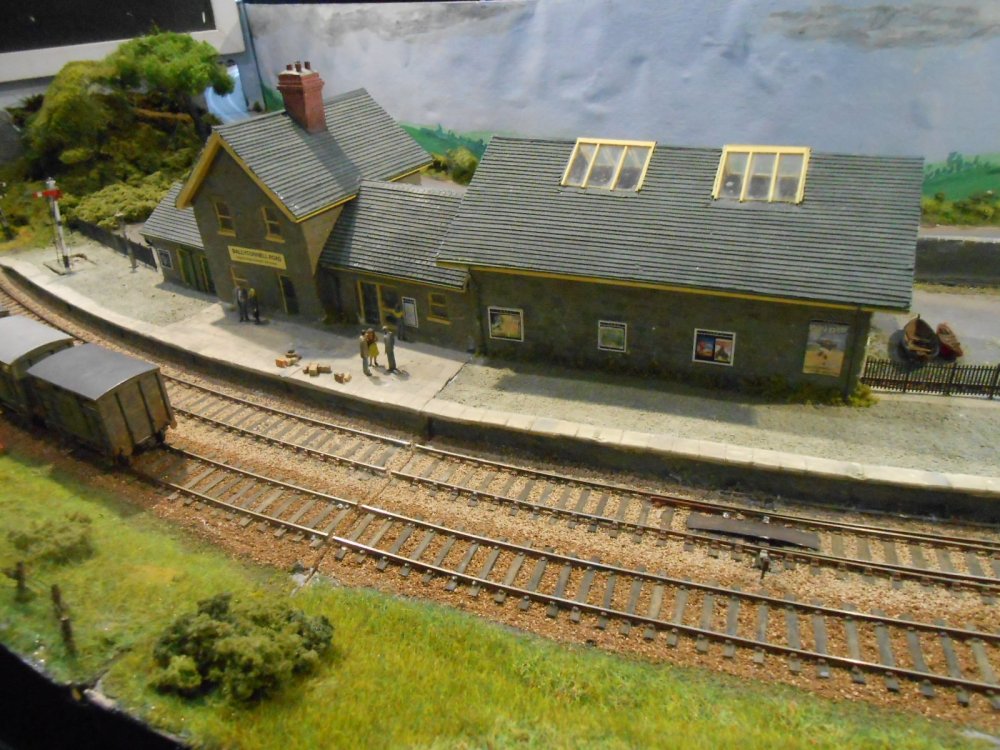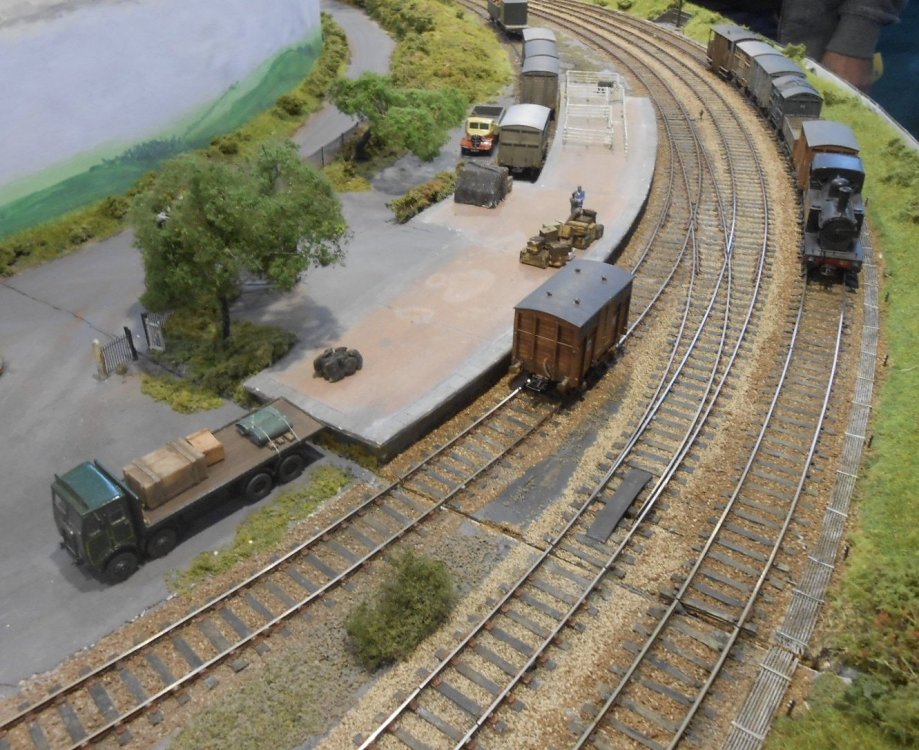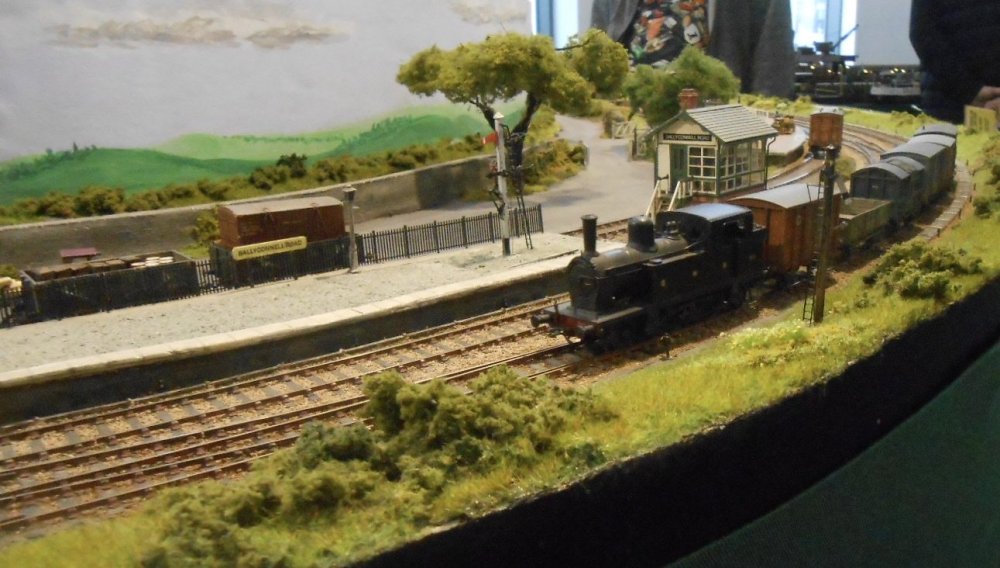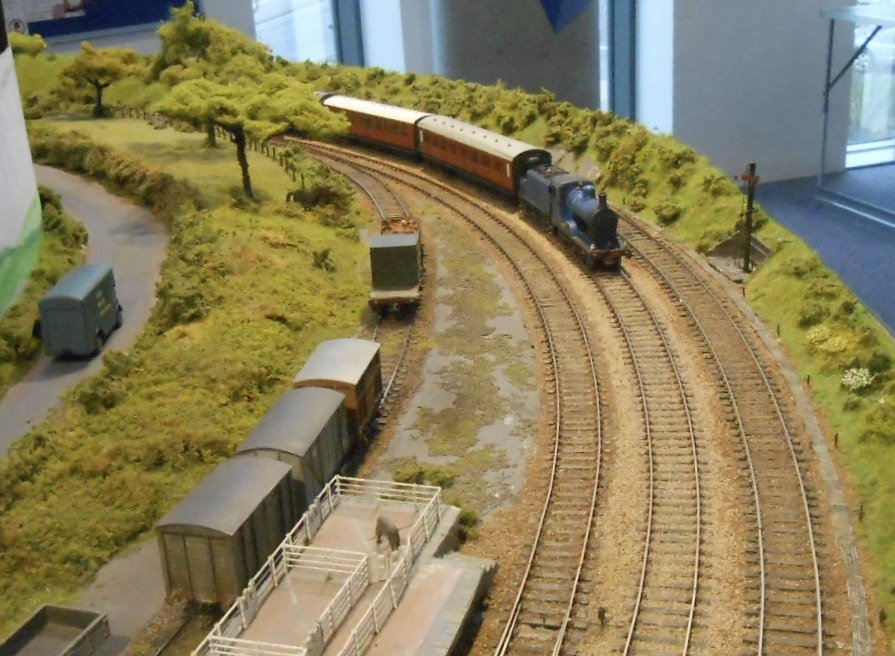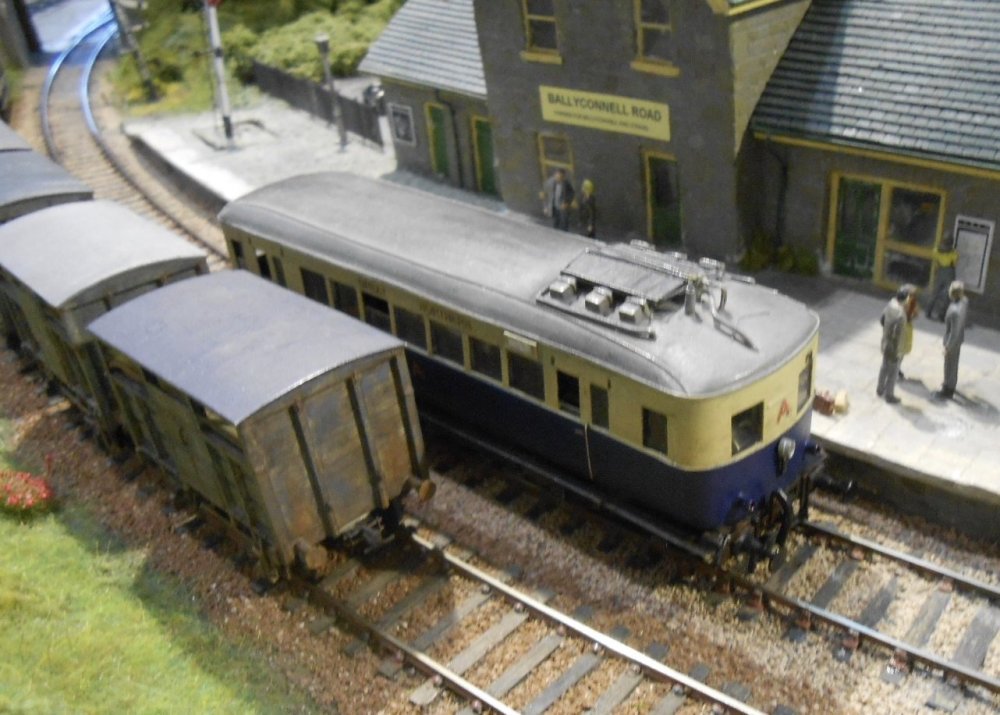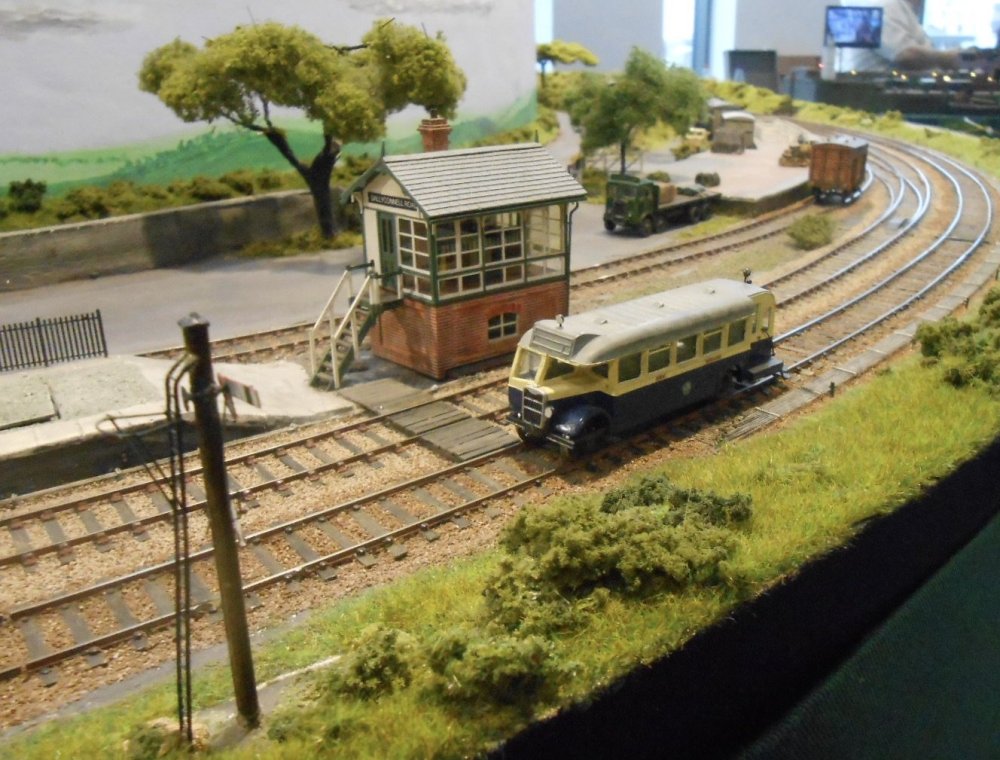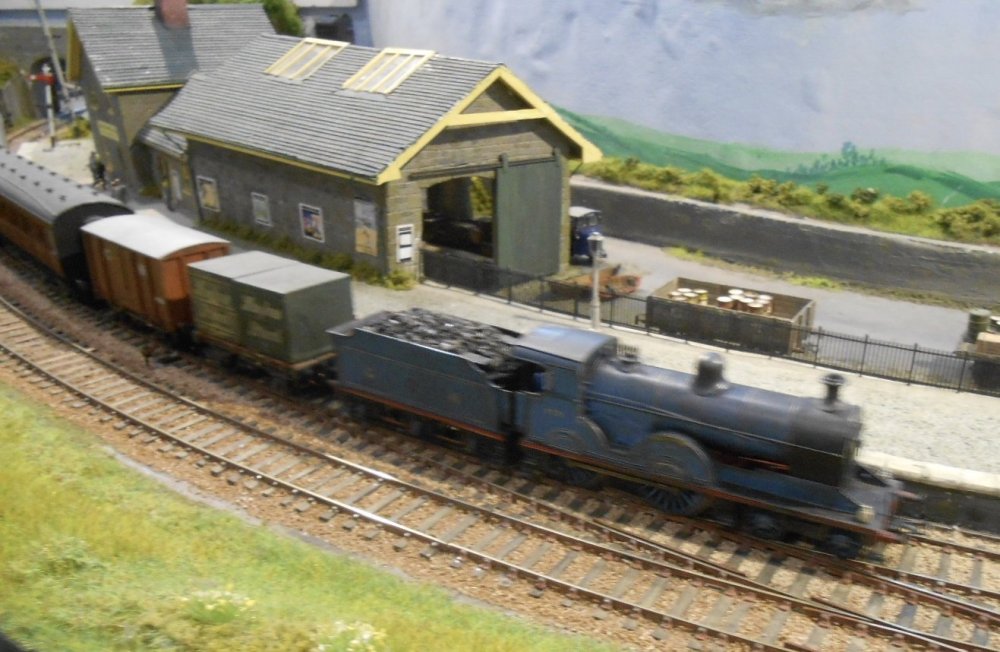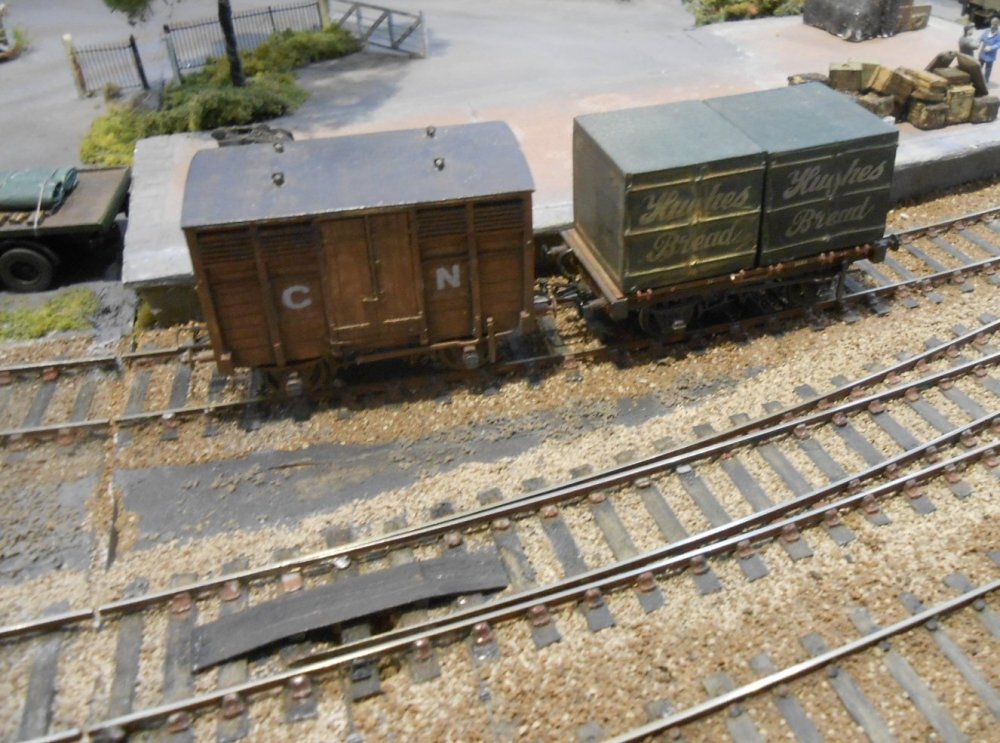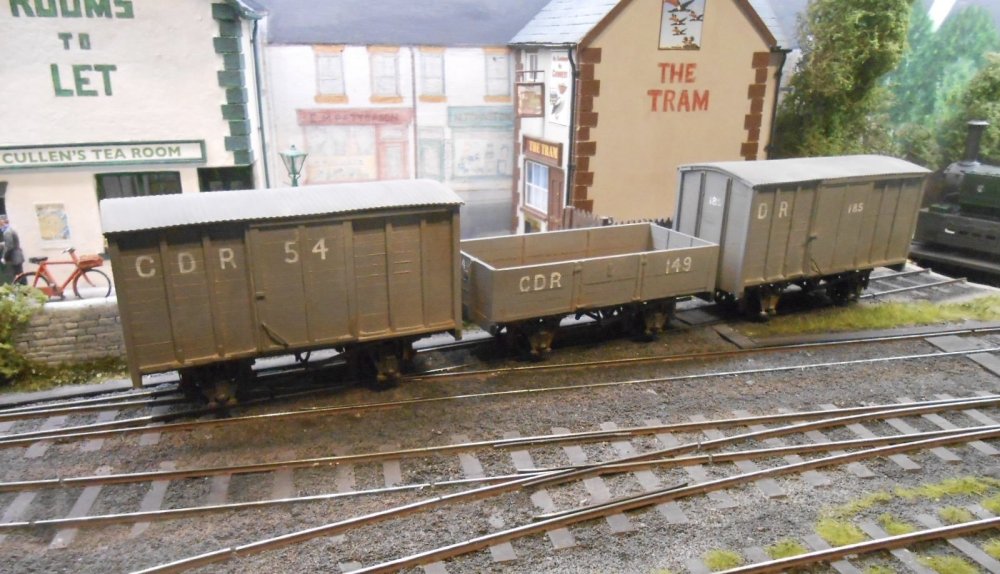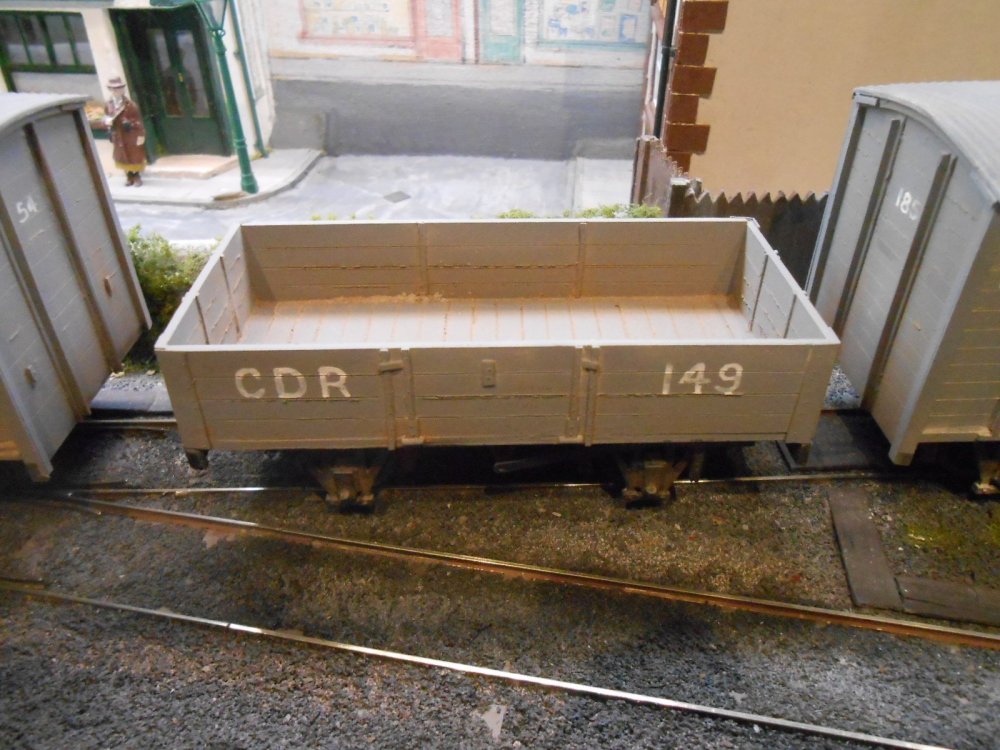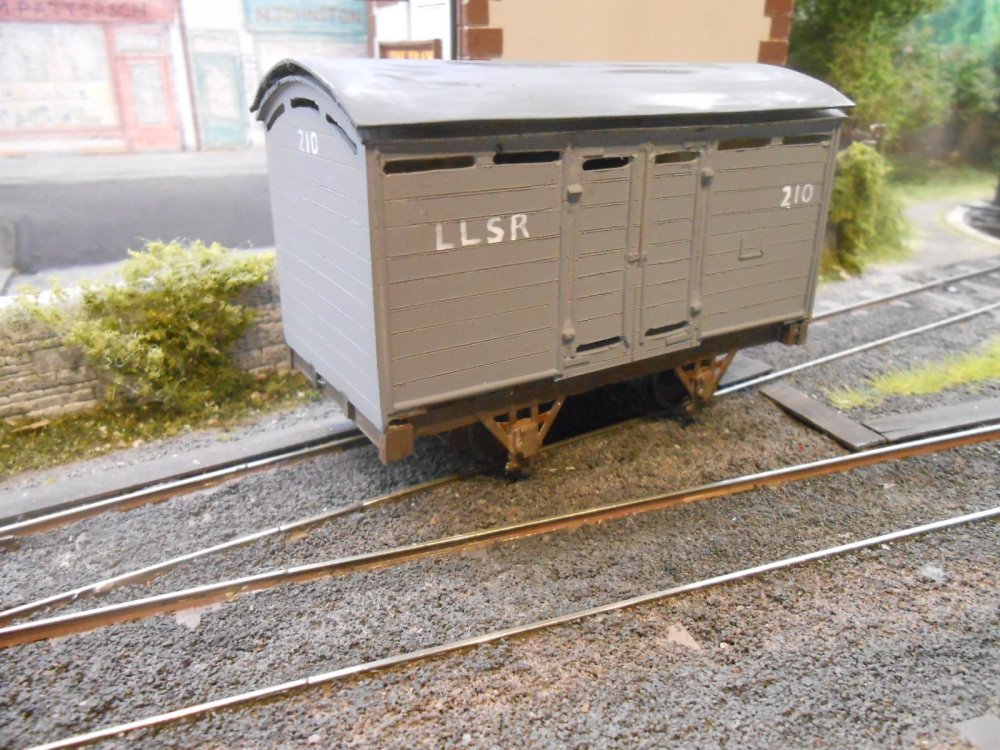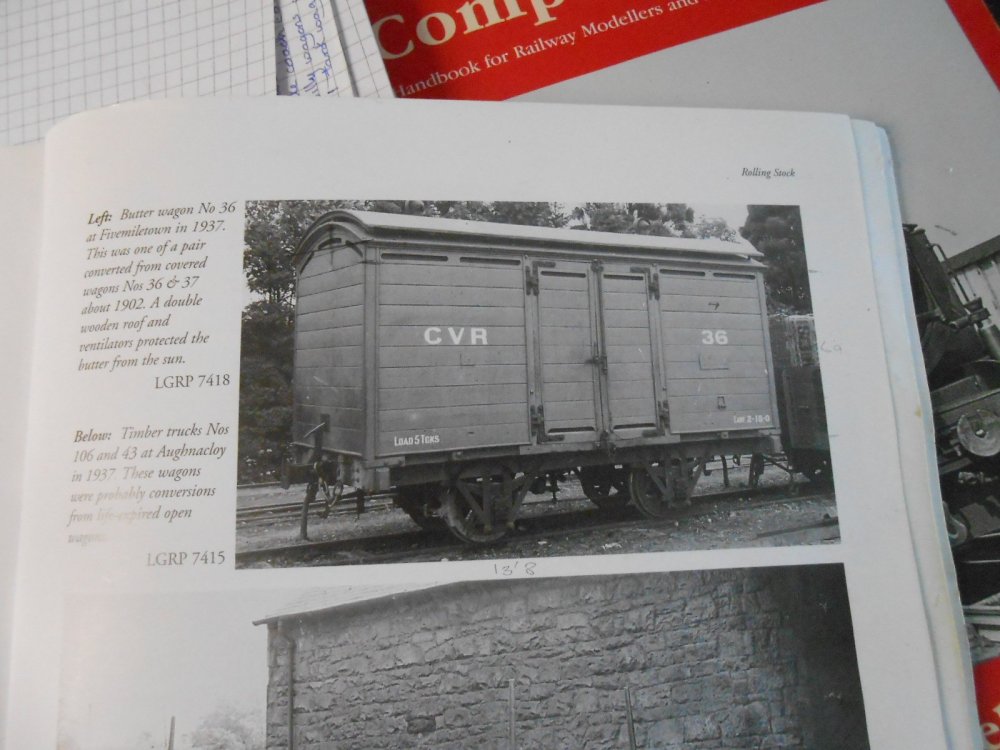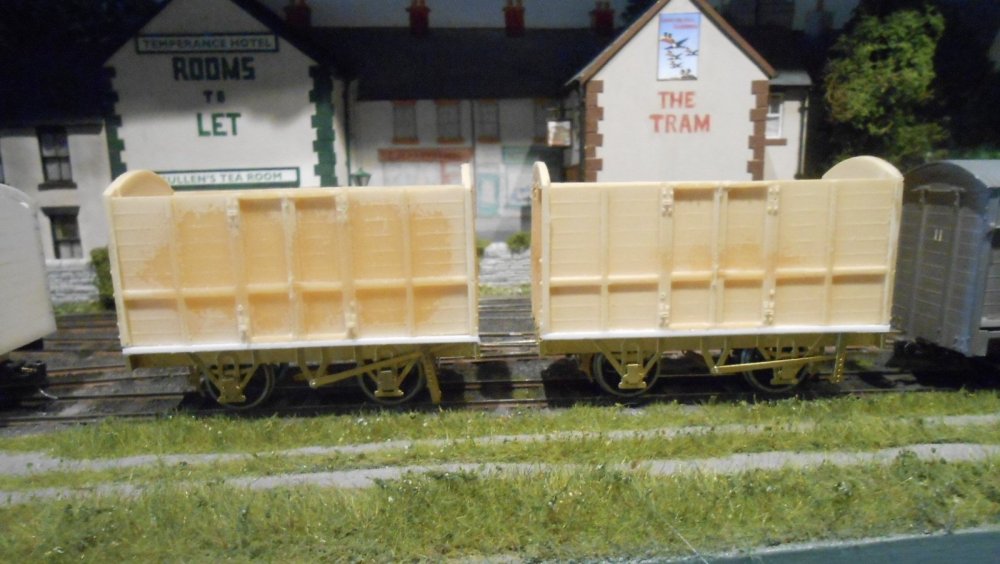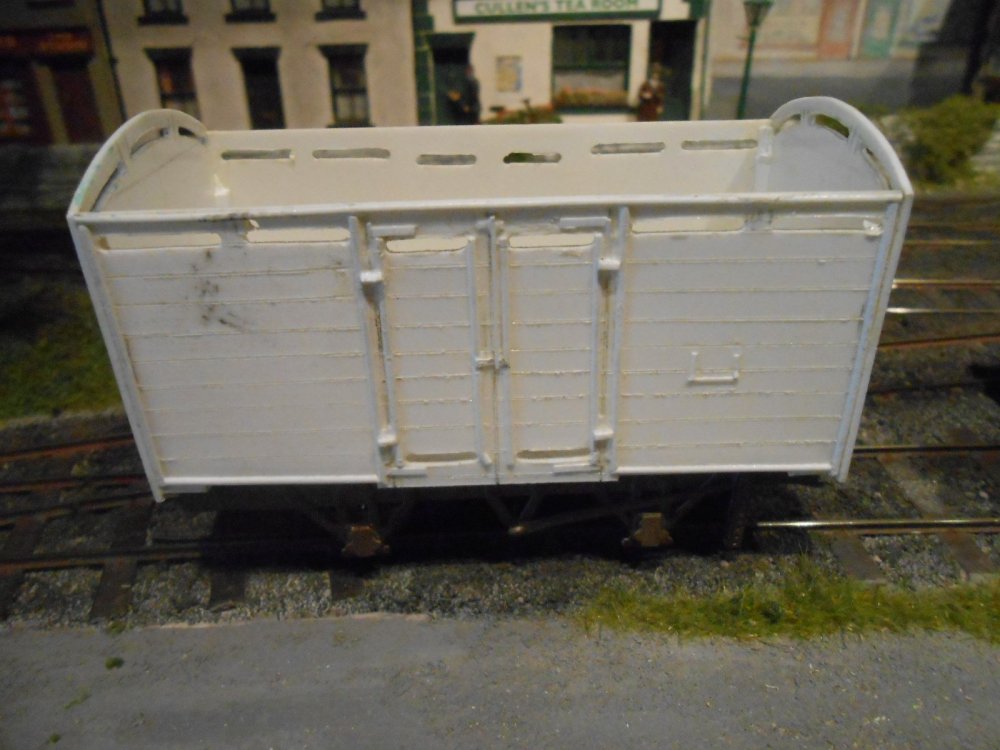
David Holman
Members-
Posts
4,359 -
Joined
-
Last visited
-
Days Won
117
Content Type
Profiles
Forums
Events
Gallery
Blogs
Store
Community Map
Everything posted by David Holman
-
In some ateas, freight is more important than passenger traffic, so a passing loop that allowed a freight train time and space to shunt, but still enabled a passenger train to pass or overtake, could be a good option. Lines with only light traffic didn't need every station to have a passing loop and some might just have a siding or two, while others might have a loop that was not signalled to pass trains, but instead was just a double ended siding that could be shunted from either end.
-
Episodes of Poirot, frequently annoy me as they rarely get the right locomotive for the period.
-
Good that people are thinking about such things more these days. Model shows can be very venue dependent and the more crowded and noisy they are, the less fun too. Same with pubs, restaurants etc too. My own bete noir are the folk who carry a parachute (aka rucksack) on their back, effectively doubling their footprint and never good in a crowded hall. I rarely go to the cinema these days, mainly because of the adverts beforehand, which seem full of flashing images and extreme volume. Let it be said, I saw the Who, Led Zeppelin, Yes and many other rock bands, back in the day, so I know the meaning of LOUD, but can't see the point of stuff that is in your face or invading my personal space. Grumpy old man? Probably - and have been since my early twenties!
-
Feet should be either yellow, pink, or grey . With that number of birds you are probably going to need to make a fair bit of guano...
-
That looks a beauty.
-
Alternatively, go 7mm scale (I would say that!) and try an Alphagraphix J26. A nice, simple kit that can be built in under 40 hours.
-
They are indeed WL&WR. They are resin cast sides that I did from my own masters, with the turf being chopped up match sticks. A description is on page 20 of my work bench thread.
-
Wondered what Eoin had been up to lately. Superb!
-
Lovely stuff, John.
-
There is the question of what species are they? No such thing as a 'sea gull', instead many types from little to greater black backed, but in 4mm scale, quite how anyone could distinguish them is a challenge. The shade of grey on their backs, plus the colour of feet and beak sets them apart to some extent. Most of these will be herring or lesser black backed.
-
Alphagraphix still have their card kit of the WLW/Sligo model. 7mm scale, but a starting point for a scratch build msybe?
-
With such romantic word 'smithery', could be there's a dash of Erin in your blood somewhere! Keep it coming.
-
We were only talking about him at the Eastleigh show on Saturday. Remember seeing at least one photo from the late 40s, so lasting into his 90s sounds right. His books on the SLNCR underpinned so much of my Arigna Town project and I still go back to them for the simple pleasures of being drawn into a bygone age. Thank you, sir and RIP.
-
Thank you kind sir! Always a pleasure.
-
Though nothing to do with Irish Railways, saw this article in a recent Railway Magazine and thought of modellers of this parish and their splendid efforts at creating Irish models from various prototypes. Not sure why anyone would want to build a new Baby Deltic, because they weren't the most successful of the early diesels, but none got preserved, so I guess it was a case of why not? Chances are, it will be more successful than the originals too, comprises as it does the following: A Class 37 as the starting point [No 372, otherwise destined to be scrapped] A team at Barrow hill have shortened the chassis at the centre and also at each nose end Most of the body itself is new Bogies and traction motors come from a Class 20 The article doesn't say where the diesel power unit will come from Given that 20s and 37s have been some of the most reliable and long lived BR diesels, you'd think this new mongrel/hybrid ought to have a chance. For me though it surely represents a tribute to all those modellers over the years, who have managed to create a new loco, previously unavailable, from a range of odds and ends. Truth stranger than fiction? Quite possibly!
-
A couple of weeks away from modelling is a long time for me, but life has been busy of late, with a week's holiday in Jordan [fantastic country], a family wedding and a two day headteacher appointment [I am a school governor]. However, with Fintonagh appearing at the Eastleigh show this weekend, the digit needed extracting, especially as CVR Railcar Number 1 has required a new motor. A High Level motor/gearbox was ordered and with the usual prompt service, arrived a couple of days later. Fitting was fairly straightforward [though I do find the parts can be fiddly], but then discovered that the cab would not fit properly due to the unit sitting higher than the previous Mashima. Therefore had to carve a few bits of the body work away, which means that the motor is rather more visible than I would like. However, with No1 soon to be repainted as Donegal No 10, am leaving things as they are for now. Did take the opportunity to add some lead to the front of the passenger compartment and [fingers crossed] the railcar is now much more comfortable than before with its usual load of a van and open wagon. Some black marker pen may help.
-
Lovely stuff. Re baseboard height, Arun Quay is about 4'3, I think, which is where I've put Fintonagh and Northport Quay. This height works really well if there is a firm barrier in front for spectators to lean on and (just about) allows someone in a wheel chair to see. As for front v rear operation, the option of sitting on a high stool is a nice one, though much depends on sight lines for uncoupling magnets, shunting and the like. In the case of this layout, guess there will always be someone in the middle too. Autocouplings, are all the Spawn of Satan, as far as I'm concerned, but a necessary evil for front operation. Personally, never minded the hand of god, but there is no doubt that any hands free operation looks really good - very much as exemplified on Ballyconnell Road last weekend.
-
For Fintonagh's three foot, 21mm track gauge, I used Templot's Irish EM point templates, but ran them through the photocopier to get 21mm gauge, three foot radius. I used Branchlines 4mm scale wagon wheels on 2mm brass axles without problems, though do need to keep an eye on back to backs. Now using Slater's 7mm scale, three foot narrow gauge wheels without problems and likewise Gibson 4mm scale drivers. I think the important thing is the flangeways, which are 1mm and (fingers crossed) all seems ok with this mongrel approach!
-
Ballyconnell Road was at the Ashford Show this weekend, so took a few photos for those of you who may not be acquainted with this splendid layout. 3mm finescale, the track gauge is the correct 15.75mm for 5'3, with the equivalent of P4 [P3?] tolerances, resulting in very fine track and exceptional running. Indeed signals all work, auto couplings seem faultless and operation is really slick. A large variety of GNR trains feature - all scratch built, with most of the steam locos having working inside valve gear. Mick has been working on some new coaches recently. Flush sided, they are scratch built from nickel silver sheet, with all the windows and toplights fretted out by hand! Enjoy...
- 4 replies
-
- 10
-

-

-

-
Three new Donegal wagons now just short of their couplings, after I made another go at the lettering. Read recently that they were hand lettered and when you look at photos, you can see that no two are the same. Hence dipping pen and Indian ink for me then. Also fitted a double roof to the CVR butter van, which is now masquerading as Swilly number 210
-
Nice! Tiny models, it always amazes me how big the real things are.
-
He'd stand a better chance by removing the Donegal tag, if he is.
-
Worth checking out the Wizard Models website, as he stocks a good range of such things.
-
While the railcar is away having a chassis made, have been using the time to finish off a few wagons, most of which have been lying around for quite a while - years in some cases! This is particularly the case with these three Clogher Valley Vans. Two of them are made from resin sides, cast from my own masters. Having put the sides and ends together, they got no further, as I realised I already had enough vehicles for Fintonagh. However, the County Donegal bought several of them, many of which became the well known 'red vans', often accompanying the rail cars. As their original 2 foot diameter wheels didn't ride too well at the faster speeds the railcars were capable of, the Donegal fitted 2'7 wheels and, happily, these fit nicely in the standard Branchlines chassis. This raises the height slightly, as can be seen in the photos, when compared to the originals. The other wagon is a butter van. I made the body from plastic sheet, but again, it has languished unused until the last couple of days, when I finally got round to adding a chassis. It also needs the double layered roof that was used to help insulation. It was used to carry rabbits late in its life, so I'm claiming that it was bought by the Swilly for the same purpose when the CVR closed, becoming their number 210. It runs on the original, smaller wheels.
-
When planning layouts, important to remember basic stuff like the length of your longest loco, so it will fit in the headshunt when running round and don't forget to add in a couple of inches for buffer stops either. Train length important too. Ideally, your longest train should be no more than a third of the length of the scenic part of the layout. It just keeps things in proportion. In 00, allow about nine inches per point (shorter or longer depending on radius) and remember that the absolute minimum width for a platform is 6 feet and 12 for an island, so one to two inches and ideally slightly more.
.png.c363cdf5c3fb7955cd92a55eb6dbbae0.png)



